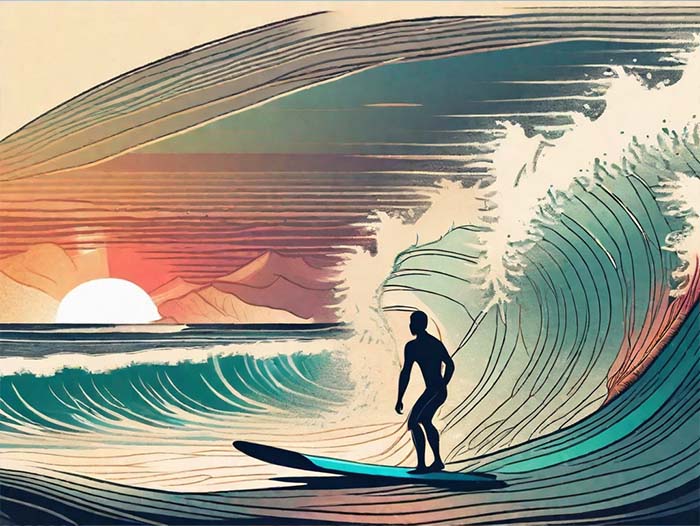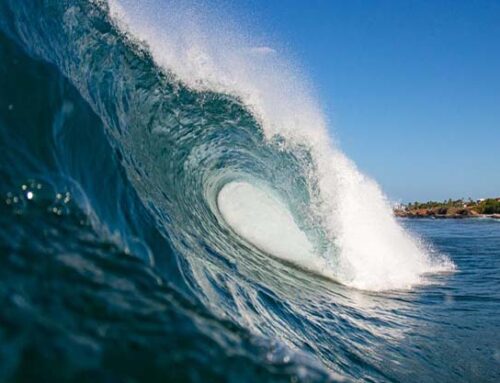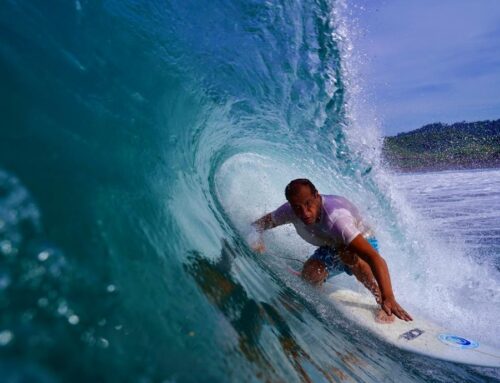Experience the Thrill of Surfing in Costa Rica
Looking for an adventure that will get your heart racing and adrenaline pumping? Look no further than Costa Rica, the ultimate destination for surfers from around the world. With its stunning coastline and consistent waves, Costa Rica offers the perfect setting to experience the thrill of surfing. Whether you’re a seasoned pro or a beginner looking to catch your first wave, Costa Rica has something for everyone. In this article, we will explore the basics of surfing, the best time to surf in Costa Rica, top surfing destinations, the surfing culture, and important safety measures to keep in mind. So grab your board, wax it up, and get ready for an unforgettable surfing experience in Costa Rica!
Understanding the Basics of Surfing
Before you hit the waves, it’s crucial to familiarize yourself with the basics of surfing. Surfing is not just about riding a wave; it’s an art form that requires skill, balance, and patience. To truly appreciate and excel in this sport, you need to understand the intricacies that go beyond simply standing on a board.
Surfing is a sport that has deep roots in ancient Polynesian culture. It was a way of life for these people, who saw the ocean as a sacred place. They believed that riding the waves connected them to the spiritual realm, allowing them to commune with nature and find inner peace.
When you step into the world of surfing, you become part of this rich history. You join a community of individuals who share a deep love and respect for the ocean. It’s not just about catching waves; it’s about immersing yourself in the beauty and power of the sea.
Surfing Equipment Essentials
When it comes to surfing, having the right equipment is essential. Here are some surfing essentials:
- A surfboard: Choose a board that suits your skill level and the type of waves you’ll be riding. There are various types of surfboards, each designed for different conditions and styles of surfing. From longboards to shortboards, fish to funboards, the options are endless.
- A leash: This is a vital safety device that attaches your surfboard to your ankle, ensuring you don’t lose it in the waves. It not only keeps you connected to your board but also prevents it from becoming a hazard to other surfers.
- Wax: Applying wax to your board will provide traction and help you maintain grip while riding. The type of wax you use depends on the water temperature and the condition of your board. It’s important to apply the right amount of wax to ensure optimal performance.
- A wetsuit: Depending on the water temperature, you may need a wetsuit to keep you warm and protected. Wetsuits come in various thicknesses and styles, catering to different climates and personal preferences. They provide insulation and flexibility, allowing you to stay in the water for longer periods.
- Sunscreen: Don’t forget to protect your skin from the sun’s harmful rays with a waterproof sunscreen. The combination of sun and saltwater can be harsh on your skin, so it’s important to apply sunscreen generously and reapply regularly to avoid sunburn and long-term damage.
Investing in quality equipment not only enhances your performance but also ensures your safety in the water. It’s important to take the time to research and choose the right gear for your needs.
Surfing Techniques for Beginners
Now that you have your equipment ready, let’s dive into some basic surfing techniques. Remember, learning to surf takes time and practice, so be patient with yourself. Here are a few techniques to get you started:
- Paddling: Mastering the art of paddling is crucial as it allows you to catch waves and position yourself in the lineup. It’s not just about flailing your arms; it’s about using your entire body to generate forward momentum. Engage your core, kick your legs, and use your arms in a controlled and efficient manner.
- Pop-up: The pop-up is the maneuver that propels you from lying on your board to standing up in a fluid motion. It requires coordination and balance. Start by placing your hands on the board near your shoulders, fingers pointing towards the nose. Push up with your arms while simultaneously swinging your legs underneath you. Find your balance and stand up, keeping your feet shoulder-width apart.
- Balance: Maintaining balance on your board is essential for staying upright and riding the wave. Keep your feet shoulder-width apart and your knees slightly bent. Distribute your weight evenly and use your arms for stability. As you gain more experience, you’ll develop a natural sense of balance and be able to adjust your stance according to the wave’s movement.
- Reading waves: Understanding wave patterns and choosing the right wave to catch is key to successful surfing. Waves are not all the same; they have different shapes, sizes, and speeds. Take the time to observe the ocean before paddling out. Look for the peak of the wave, where it starts to break, and position yourself accordingly. Anticipate the wave’s direction and adjust your paddling speed to match its speed.
Learning to surf is an ongoing journey. It’s about developing a deep connection with the ocean and honing your skills over time. Embrace the challenges and enjoy the process of becoming one with the waves.
The Best Time to Surf in Costa Rica
If you’re planning a surfing trip to Costa Rica, timing is everything. The country boasts consistent waves year-round, but certain months offer optimal conditions for surfing.
Surfing Seasons in Costa Rica
Costa Rica has two main surfing seasons – the dry season and the wet season.
The dry season, from December to April, is considered the high season for surfing as it offers consistent offshore winds and smaller waves, perfect for beginners and intermediate surfers. The wet season, from May to November, brings larger swells, making it a favorite among experienced surfers. It’s important to note that the weather and wave conditions can vary depending on the region, so it’s always a good idea to check the local forecasts before heading out.
Weather Conditions for Surfing
Costa Rica’s tropical climate provides ideal conditions for surfing year-round. The average water temperature ranges from 78 to 85 degrees Fahrenheit (25 to 29 degrees Celsius), so you can leave the wetsuit at home during the dry season. However, during the wet season, the water can cool down, so wearing a wetsuit might be preferable.
Top Surfing Destinations in Costa Rica
Costa Rica is home to some of the best surfing spots in the world. Whether you’re a beginner or an advanced surfer, there’s a beach for everyone.
Popular Surfing Beaches
Tamarindo Beach: Located on the Pacific coast, Tamarindo is a bustling surfing town with waves that cater to both beginners and advanced surfers. The consistent and mellow waves make it an ideal spot to improve your skills.
Playa Hermosa: Famous for its powerful and consistent waves, Playa Hermosa is a favorite among experienced surfers. The beach is located near Jaco and offers challenging waves that will put your skills to the test.
Santa Teresa: Situated on the Nicoya Peninsula, Santa Teresa is renowned for its long sandy beaches and consistent waves. It’s a popular destination for surfers of all levels.
Hidden Surfing Gems in Costa Rica
If you’re looking to escape the crowds and discover some hidden gems, Costa Rica has plenty to offer. Some lesser-known surfing spots include:
- Pavones: Known for its legendary left-hand point break, Pavones offers one of the longest waves in the world. It’s a paradise for intermediate and advanced surfers seeking a challenge.
- Playa Avellanas: This secluded beach is located in Guanacaste and is known for its world-class waves and uncrowded lineup. The reef break offers both lefts and rights, catering to surfers of all levels.
- Witch’s Rock: Located in Santa Rosa National Park, Witch’s Rock is a renowned surfing spot that offers consistent waves and breathtaking views. It’s accessible by boat and is suitable for intermediate to advanced surfers.
Surfing Culture in Costa Rica
Surfing is deeply ingrained in Costa Rican culture and has become a way of life for many locals. The country’s laid-back lifestyle, friendly locals, and captivating surf culture make it a unique destination for surf enthusiasts.
Local Surfing Traditions
Costa Ricans, or “Ticos,” have a deep respect for the ocean and its power. They embrace sustainable practices and strive to protect the environment that provides them with incredible waves. Engaging with the local community and learning about their traditions will enrich your surfing experience in Costa Rica.
Surfing Competitions and Events
Costa Rica hosts various surfing competitions and events throughout the year, attracting surfers from all over the world. These events showcase the country’s vibrant surf culture and provide an opportunity to watch professional surfers in action. Whether you’re participating or spectating, these competitions are a must-see for any surfing enthusiast.
Safety Measures While Surfing in Costa Rica
While surfing is an exhilarating activity, it’s essential to prioritize safety. Familiarize yourself with some safety measures to ensure a memorable and incident-free surfing experience.
Understanding the Ocean Currents
Before hitting the waves, it’s crucial to assess the ocean currents and rip currents in the area. These powerful water movements can quickly sweep you away from the shore. Always check local surf reports, talk to experienced surfers, and be aware of any warnings or advisories.
Surfing Etiquette and Rules
Respect for fellow surfers and the ocean is essential. Adhere to proper surfing etiquette, such as taking turns, respecting the lineup, and avoiding drop-ins. Following these unwritten rules will enhance your experience and maintain harmony in the water.
So, if you’re ready for an unforgettable surfing adventure, pack your bags and head to Costa Rica. With its awe-inspiring waves, stunning beaches, and rich surfing culture, Costa Rica promises an experience that will leave you wanting more. So wax up your board, catch some waves, and let the thrill of surfing in Costa Rica wash over you!



